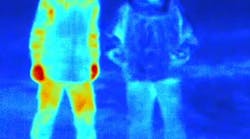ARLINGTON, Va., 23 Oct. 2009. Aeronautical scientists at the U.S. Defense Advanced Research Projects Agency (DARPA) in Arlington, Va., are taking another step in developing an unmanned aerial vehicle (UAV) able to stay aloft and on station for as long as five years to act as an electronic sensor and military communications platform.
This project, called Vulture II, will compete three contractor teams -- led by Aurora Flight Sciences Corp. of Manassas, Va.; the Boeing Co. Integrated Defense Systems advanced systems segment in St. Louis; and the Lockheed Martin Skunk Works in Palmdale, Calif. -- for the right to build a small-scale flight demonstration version of the Vulture high-altitude UAV that must remain aloft and on station for three months.
DARPA officials released the solicitation (DARPA-BAA-10-04) for the second phase of the Vulture program today. Only one of the Vulture phase-one company teams will win a $155 million contract to build the Vulture II demonstrator UAV. Phase-one of the program produced blueprints of full-scale and subscale demonstrator aircraft.
All three of the Vulture phase-one companies are proposing aircraft that rely on solar power during the day, and on stored battery power at night. These aircraft would operate at altitudes above the clouds from 60,000 to 90,000 feet, and must be able to withstand winds typically found at those altitudes.
For this phase of the Vulture II competition, DARPA officials say they expect solar-powered, electric-propulsion demonstrator aircraft, but will consider other approaches -- except for nuclear powered aircraft and lighter-than-air blimps. Sponsoring the program is the DARPA Tactical Technology Office.
An unmanned aircraft with operational endurance of five years might act as a substitute for communications and reconnaissance satellites, and might provide an affordable alternative to the cancelled U.S. Air Force Transformational Communications Satellite system, better known as TSAT, according to Defense Industry Daily in a story headlined DARPA's Vulture: What Goes Up, Needn't Come Down.
The program's aim is to develop a UAV able to fly for five years with a 5-kilowatt power system that can carry payloads as heavy as 1,000 pounds. Such a long-endurance UAV could be moved easily to areas that need communications and/or reconnaissance capability.
The future deployable Vulture UAV must be able to avoid being ripped apart or blown off station from jet stream-power winds.
DARPA wants proposals for the Vulture II program no later than noon easter time on 21 Dec. 2009. Send proposals to Dan Newman, DARPA ITO, ATTN: DARPA-BAA-10-04, 3701 North Fairfax Drive, Arlington, Va. 22203-1714.
For questions, contact DARPA's Dan Newman by e-mail at [email protected], or by fax at 703-696-8401. More information is online at https://www.fbo.gov/spg/ODA/DARPA/CMO/DARPA-BAA-10-04/listing.html.
-- Posted by John Keller, [email protected]. www.milaero.com.
Follow me on TwitterPost your aerospace and defense-related material to the #milaero community on Twitter. Use the #milaero hashtag.


